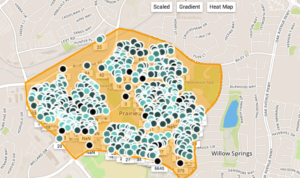Things are moving fast
Like the toad in the boiler, it’s sometimes hard to appreciate how quickly software is changing our day-to-day activities. Teens are delaying getting a driver’s license in lieu of Uber or Lyft, payment apps like Venmo and Google Pay are replacing the exchange of cash, and cord-cutting, i.e. cancelling your cable package because #internet, has tripled since 2013.
Water utilities are doing their part to evolve and meet customers’ steadily changing expectations with services like customer portals that provide a customer’s usage and sometimes provide an online bill pay option. This is an important, albeit elemental and often static, step in improving a utility’s customer service and processes. The next step a utility can take to reduce costs and improve satisfaction is to use those existing services and start proactively communicating.
“Residents may experience water issues this week as hydrants are being flushed.”
How many calls does your customer service team field just about hydrant flushing? Well-funded organizations can dodge these with door-hangers, but sometimes teams are limited to social media, the local radio and grit.
Dedham Westwood Water District (DWWD) serves 13,500 New England homes and businesses outside of Boston and was the recipient of a generous grant from the Massachusetts Department of Environmental Protection to implement Dropcountr. Now in the second year of service, Executive Director Eileen Commane and her team are using targeted and immediate utility-to-customer digital communication to pre-emptively alert their customers to activities in the towns of Dedham and Westwood, such as hydrant flushing and pipe repair.
Annual hydrant flushing can lead to many customer service calls from our residents, alarmed by discolored water. It typically takes us about six weeks complete the exercise, which means a lot of calls,” said Eileen Commane, Executive Director of Dedham Westwood Water District, “Historically we’ve posted this announcement on our website or in the local press, to stay ahead of the calls – but this assumes people are checking the website or consistently paying attention and remembering what’s announced in the media – a tall order

“The staff strives to minimize customer inconvenience – but in the case of flushing, impacted areas are difficult to predict. It’s not that we haven’t been proactive about flushing announcements in the past – we simply didn’t have the ability to communicate directly with the customer in a timely fashion – six weeks is a long time.
“With Dropcountr, our staff are able to easily send targeted messages to the specific neighborhoods we’re working when we’re working them. That’s when the flushing maintenance really may impact them. Who wants to be on alert for six weeks when the laundry is piling up? Our staff report this direct approach has led to fewer customer calls and our customers have noted that they like receiving these proactive messages.”
So what?
Proactive communication isn’t groundbreaking, but has historically been expensive (paper) and not effective (messages posted to the utility website) Not so, in the era of digital communication. The best thing a customer service team can do now, to benefit their team today and down the road, is to start building that digital utility: customer relationship. Your customers are online, they just might not be online with you.
Start accruing emails (the smart utility would require at least an email, if not a cell phone); push your customers to online bill pay; invest in a website that is navigable; take it a step further and invest in a customer portal that facilitates (and automates) many of the functions that currently sink your customer service bandwidth – these are all steps that can be reasonably implemented and result in long-term efficiency and cost-savings.
Where are we flushing this week? Can we send them a heads up?
What customers are routinely late on their bills? Can we send them a reminder before its due?
What areas are affected by system outages? Will a change in messaging avoid inbound calls?
As you can imagine, proactive communication – as opposed to reactive – is easier to budget and manage. Dropcountr makes it easy to identify areas or behaviors of interest to facilitate engagement before it becomes a cost or time sink and will only become more useful over time. The march of technology isn’t steady – it’s rapidly accelerating and opening the door to operation efficiencies for utility staff.
Get your customers online! Your future team thanks you!
The Dropcountr program is made available to Westwood and Dedham residents as part of a pilot project funded by the Massachusetts Department of Environmental Protection under Water Management Act regulations to promote water awareness and conservation. The project is a cooperative effort of the Dedham-Westwood Water District, Charles River Watershed Association and the Neponset River Watershed Association and we at Dropcountr are so grateful! 🙏🏼

2 Responses
Comments are closed.